General introduction
The Art of Reasoning in Medieval Manuscripts
Welcome to this online exhibition! It shows you the art of scholarly debate and academic reasoning in medieval Europe, as illustrated by manuscripts, texts and topics of debate. It will introduce you to the basic texts, briefly explain the place of debate and reasoning in medieval education and portray some of the masters of the period. Most of all, however, it will showcase manuscripts in which teachers and students come to life: they left their traces in the making and subsequent use of them. The exhibition reveals what you are normally unable to see: by providing guided tours through manuscripts and pointing out their details, it gives you the opportunity to discover the techniques of reading and learning in this distant past.
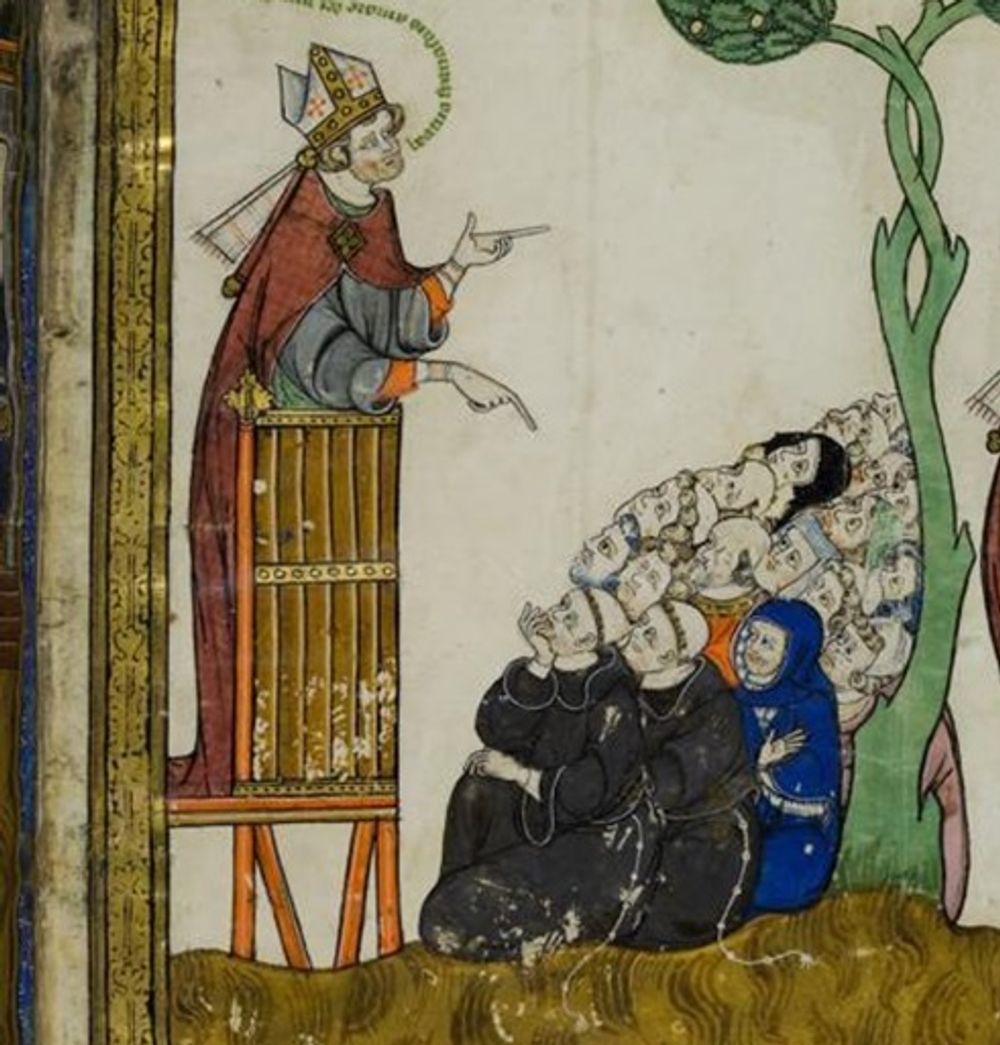
https://nbn-resolving.de/urn:nbn:de:bsz:31-8765
Medieval learning: the not-so-dark-ages
In this exhibition we wish to show you that the modern cliché of the Middle Ages as a period of darkness and stupidity is wrong. In the traditional narrative, the Church is depicted as a conservative power trying to stop scientific progress and to dictate a certain version of the truth. Think of the Church’s ban on certain books of Aristotle and Averroes in the thirteenth century: their teachings were declared heretical and therefore forbidden. The idea of the Church opposing a culture of knowledge and science, however, has been effectively proved to be very one-sided. It is a product of certain Enlightenment philosophers rather than a reliable picture of historical reality.
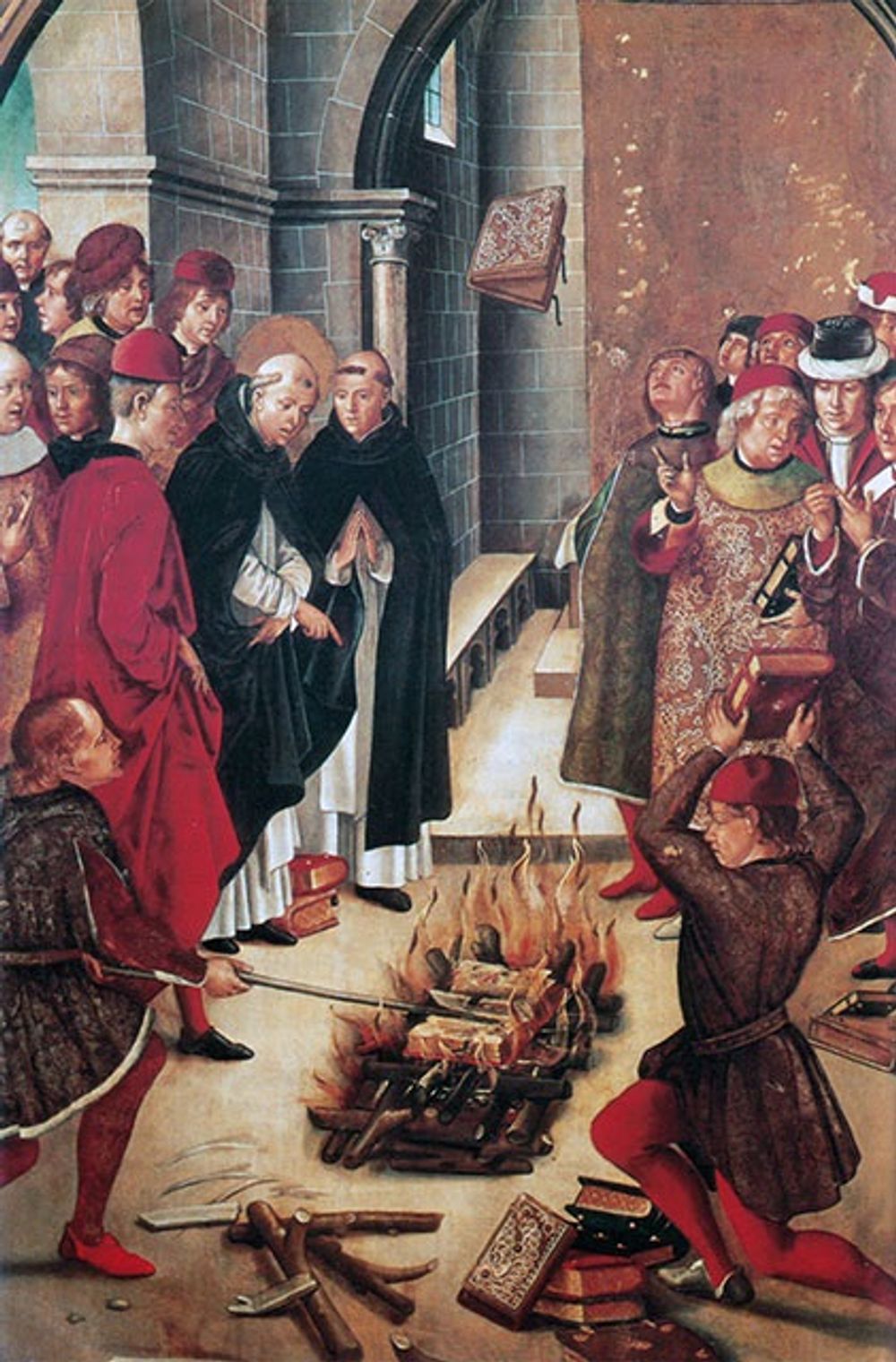
https://uwm.edu/libraries/burnedbooks/
In fact, if one looks at the great production of books and texts in the Middle Ages, a completely different image surfaces: from Late Antiquity on, the Church promoted a culture of reading and studying. In monasteries, monks were copying texts, emending them and putting them together in new constellations. They were large-scale producers, readers and students of texts. In universities, the art of reading and discussing was perfected into a proper method of learning and examinations, which are still visible in the universities, their curriculum and their graduating systems of today.
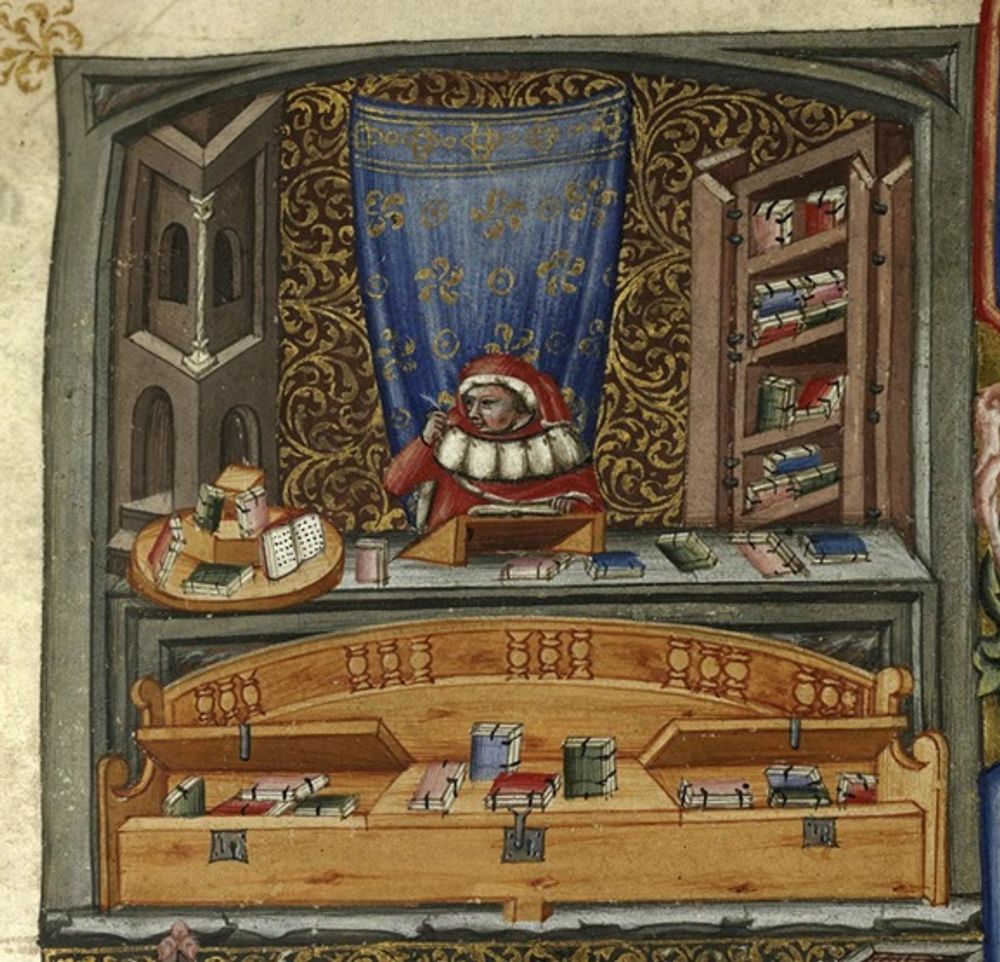
http://initiale.irht.cnrs.fr/decor/99904
The point of this exhibition
The point of this exhibition is to show the richness of medieval scholarly thought, method and experiment, within the context of monasteries, cathedral schools and universities. Manuscripts, hand-copied books produced by and for monastic communities or individual students and scholars, are our looking glass: they reflect a world of thinking, arguing, learning, teaching, but also of joking, criticizing and fuming. In these books we find amazing anecdotes and colourful personalities.
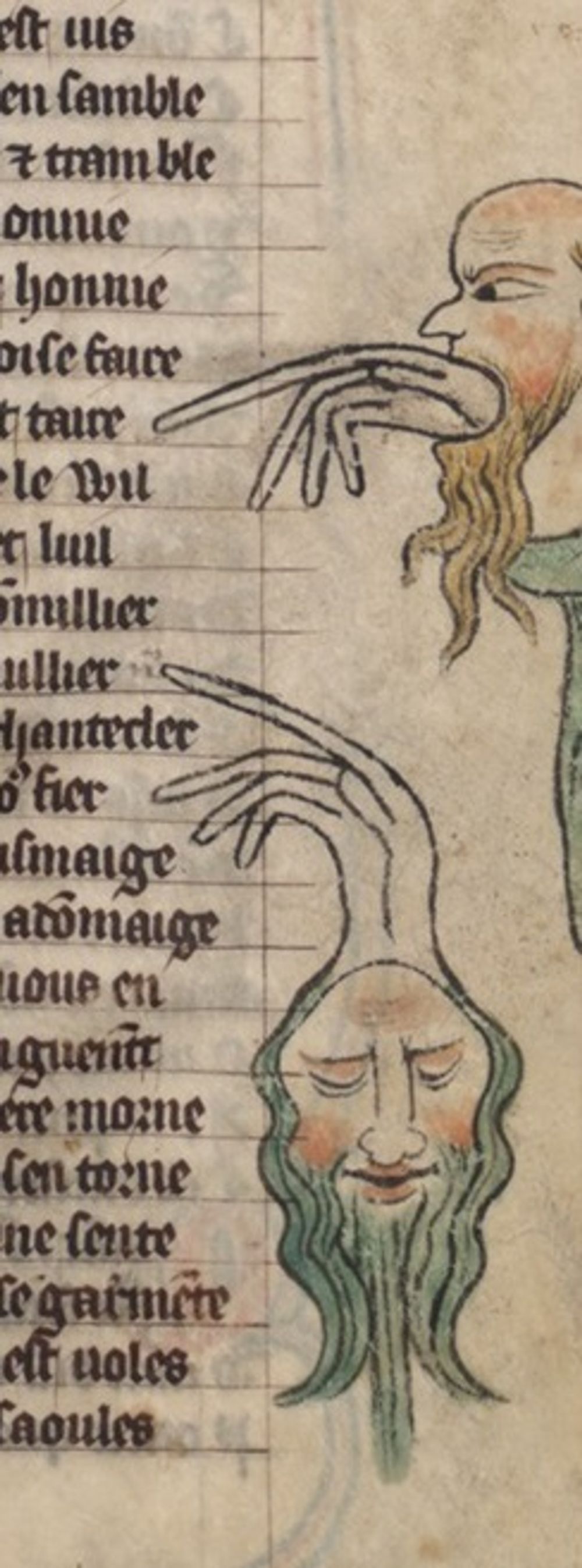
https://gallica.bnf.fr/ark:/12148/btv1b60004625
The lay-out of this exhibition
We illustrate the medieval art of reasoning by means of four themes. The first theme, Rhetoric and Dialectic, introduces the visitor to the medieval classroom, the curriculum and the disciplines of rhetoric and dialectic, the key disciplines of the art of reasoning. It briefly explains what the medieval educational system may have looked like, which subjects were taught, which texts were read, and what they had to offer. The second theme, Teachers and Students, introduces the visitor to a small number of teachers and students that were important for the medieval teaching- and learning tradition of rhetoric and dialectic. We chose a handful of teachers whom we came across in our manuscript selection.
The third and fourth theme are the most exciting part: they seek to show details in the selected manuscripts that reveal how, in fact, readers worked with their texts, how they read, learned and remembered. In the third theme, Glosses and Diagrams, we show the techniques used on the page to work with texts. In the fourth, Debate and Controversy, we show how the theory of speaking and reasoning can be connected to some actual historical debates and controversies.
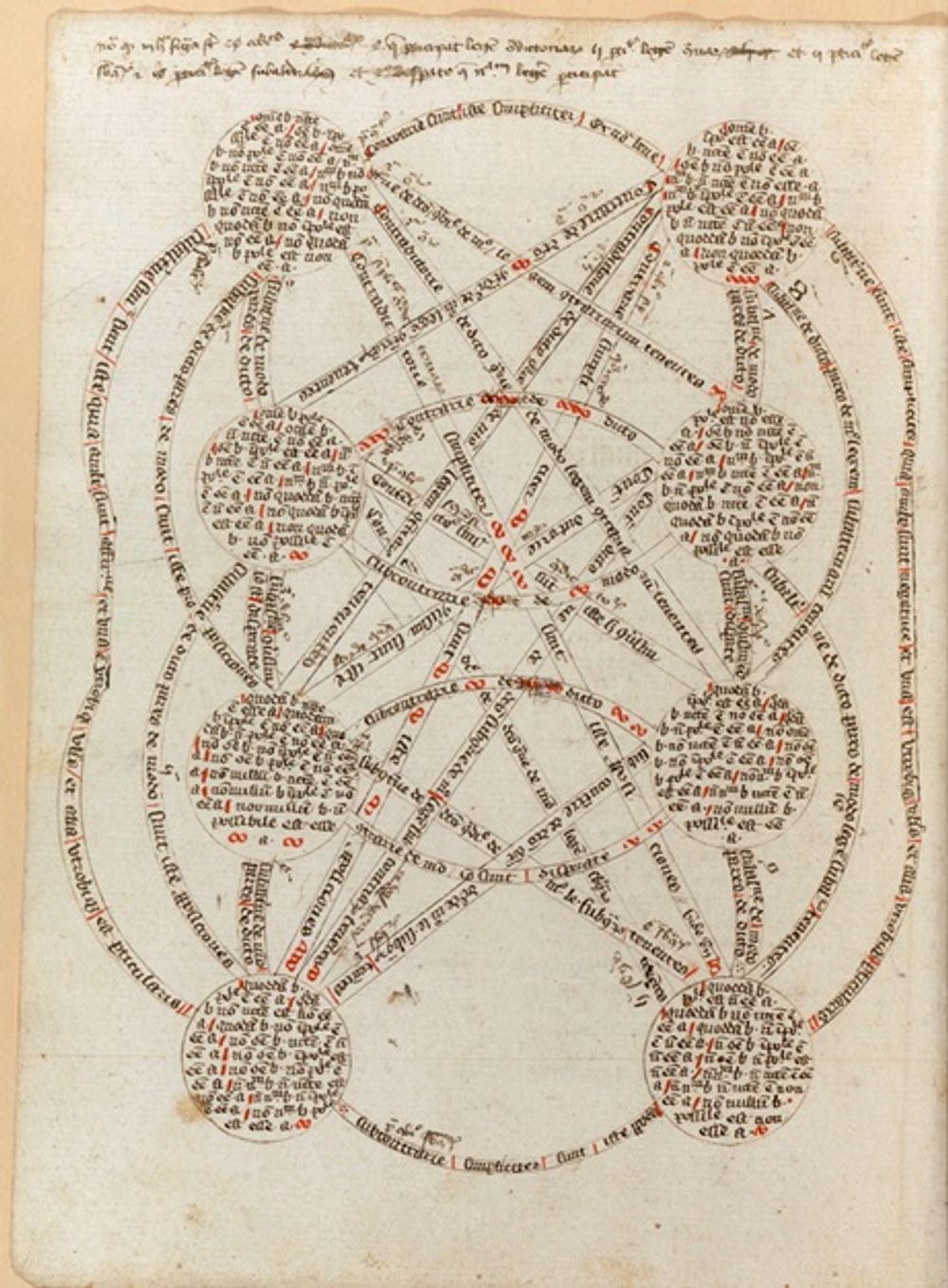
https://gallica.bnf.fr/ark:/12148/btv1b90767401
Each theme has its own narrative, and you can follow it from head to tail. In each theme, however, there are also links to other themes, or part of them, and to the manuscripts that are at the basis of it all. So, you can either choose to follow the preset path, or drift off to a linked theme or story.

https://medievalbooks.nl/2015/12/11/to-conserve-or-not-to-conserve-that-is-the-question/


 Next Read:
Next Read: